Related Research Articles
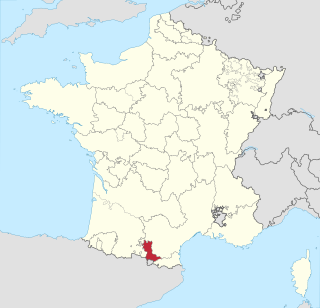
The County of Foix was a medieval fief in southern France, and later a province of France, whose territory corresponded roughly the eastern part of the modern département of Ariège.

Catherine was Queen of Navarre from 1483 until 1517. She was also Duchess of Gandia, Montblanc, and Peñafiel, Countess of Foix, Bigorre, and Ribagorza, and Viscountess of Béarn.

Gaston IV was the sovereign Viscount of Béarn and the Count of Foix and Bigorre in France from 1436 to 1472. He also held the viscounties of Marsan, Castelbon, Nébouzan, Villemeur and Lautrec and was, by virtue of the county of Foix, co-prince of Andorra. From 1447 he was also Viscount of Narbonne. Through his marriage to Eleanor, heiress of the Kingdom of Navarre, he also held the title of Prince of Navarre.

The viscounts of Béarn were the rulers of the viscounty of Béarn, located in the Pyrenees mountains and in the plain at their feet, in southwest France. Along with the three Basque provinces of Soule, Lower Navarre, and Labourd, as well as small parts of Gascony, it forms the current département of Pyrénées-Atlantiques (64).

The County of Bigorre was a small feudatory of the Duchy of Gascony in the ninth through 15th centuries. Its capital was Tarbes.
Guy de Montfort was the Count of Bigorre from 6 November 1216 to 1220 in right of his wife, Petronilla. He was a son of Simon de Montfort, 5th Earl of Leicester and Alice of Montmorency.

Gaston VI (1173–1214), called the Good, was the Viscount of Béarn, Gabardan, and Brulhois from 1173. He was also Count of Bigorre and Viscount of Marsan through his marriage in 1196 to Petronilla, the daughter of Countess Stephanie-Beatrice of Bigorre.
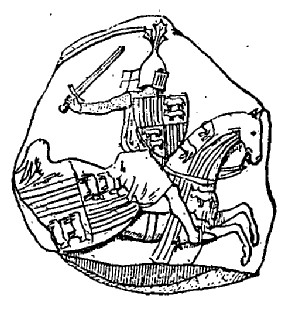
Gaston II of Foix-Béarn, son of Gaston I of Foix-Béarn and Jeanne of Artois, was the 10th Count of Foix.
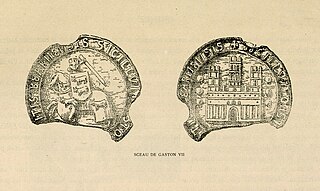
Gaston VII de Montcada, called Froissard, was the twentieth Viscount of Béarn from 1229. He was the son and heir of Guillermo II de Montcada of the House of Montcada and of Garsenda, daughter of Alfonso II of Provence and Garsenda of Forcalquier. He was succeeded by Roger-Bernard III of Foix.
Joan of Artois, Countess of Foix, Viscountess of Béarn, was a French noblewoman, and the wife of Gaston I de Foix, Count of Foix, Viscount of Béarn. From 1331 to 1347 she was imprisoned by her eldest son on charges of scandalous conduct, dissolution, and profligacy.
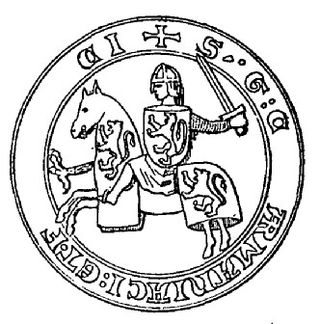
Gerald VI, (1235–1285), was Viscount Fezensaguet from 1240 to 1285, then Count of Armagnac and Fézensac from 1256 to 1285. He was the son of Roger d'Armagnac, Viscount of Fezensaguet, and Pincelle d'Albret.
Eschivat IV Chabanais was Count of Bigorre from 1255 to 1283 and Count of Armagnac and de Fézensac of 1255 in 1256. He was the son of Jordan, Lord of Chabanais, and Alix de Montfort, Countess of Bigorre.

Isabella of Foix also known as Isabella of Foix-Castelbon was sovereign Countess of Foix and Viscountess of Béarn from 1399 until 1428. She was Countess of Foix in her own right, but shared power with her husband and later with her son. She succeeded as countess along with her husband upon the death of her childless brother Matthew.
Petronilla of Bigorre or Petronilla of Comminges was ruling Countess of Bigorre between 1194 and 1251. She was the only child of Bernard IV, Count of Comminges, and his wife Stephanie-Beatrice IV, Countess of Bigorre. Petronilla succeeded her mother in 1194 as Countess of Bigorre; she was also Viscountess of Marsan and Nébouzan through further successions. She reigned as countess for fifty-seven years, in which time she was married five times.
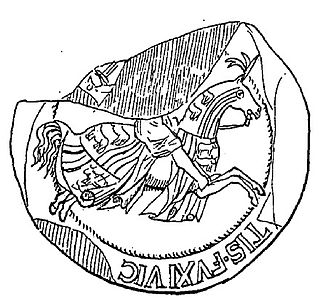
Gaston I of Foix or Gaston VIII of Foix-Béarn was the 9th Count of Foix, the 22nd Viscount of Béarn and Co-Prince of Andorra.
Alice of Bigorre (1217/1220-1255), also known as Alice or Alix de Monfort was suo jure ruling Countess of Bigorre between 1251 and 1255.
Constance was suo jure Viscountess of Marsan as well as titular Countess of Bigorre, daughter of Gaston VII, Viscount of Béarn and his first wife Martha of Marsan. Constance inherited all of her titles from her mother and contended to inherit her father's Viscounty of Béarn. She was married three times during her lifetime, marrying into the royal families of Aragon, Castile and England.
The Viscountcy Castillon was situated in south-western France. At its centre was the town of Castillon-sur-Dordogne. The purpose of the viscountcy, which has existed since the 10th century, was in the defence of the crossing over the river Dordogne.

Margaret of Béarn – also known as Margaret or Margueriteof Montcada was a noblewoman, who ruled lands near the Pyrenees mountains and in the southwestern part of present-day France. When her father died in 1290, she inherited the lands, assets and title, Viscountess of Béarn. In 1310 following the death of her sister, she inherited the assets and title of Countess of Bigorre.
References
- 1 2 3 4 5 Lodge 1926, p. 15.
- ↑ Merlet ´Procès´, Pièces Justificatives, I, p. 314, quoting Cartulaire de Bigorre, ch. 39.
- ↑ Dictionnaire de la conversation et de la lecture, 2nd Edition, Vol.3, Ed. William Duckett, (Aux Comptoirs de la Direction, 1856), 200.
- ↑ Dictionnaire de la conversation et de la lecture, 2nd Edition, Vol.3, Ed. William Duckett, Aux Comptoirs de la Direction, 1856.
- ↑ Merlet ´Procès´, Pièces Justificatives, XIV, p. 322, quoting Cartulaire de Bigorre, ch. 36.